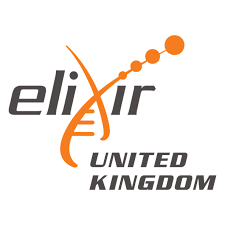
GtoPdb is requesting financial support from commercial users. Please see our sustainability page for more information.
Search results
Page 1 of 20
Your search for Alzheimer's returned 196 results
Disease Synonym: Alzheimer's disease
Pathophysiology comments: Alzheimer's disease. Inhbition of C5aR, through oral administration of PMX205, in these models reduces
Pathophysiology role: Alzheimer's disease anti-PD1 antibody treatment was used to induce immune checkpoint blockade. The biological
Pathophysiology role: neurons and may be a potential therapeutic target for the treatment of Alzheimer's disease
Disease Synonym: Early-onset autosomal dominant Alzheimer disease
Disease Synonym: Alzheimer's disease
Disease Synonym: Early-onset autosomal dominant Alzheimer disease
Disease Synonym: Alzheimer's disease
Consequences of altering gene expression: accumulation of the amyloid-beta peptide in vitro and in an Alzheimer's disease mouse model
Mutations/pathophysiology - disease: Alzheimer disease
Mutations/pathophysiology - disease: Alzheimer's disease aka Alzheimer disease
Mutations/pathophysiology - role: neurons and may be a potential therapeutic target for the treatment of Alzheimer's disease
Mutations/pathophysiology - disease: Alzheimer's disease aka Alzheimer disease
Mutations/pathophysiology - role: Alzheimer's disease anti-PD1 antibody treatment was used to induce immune checkpoint blockade. The biological
Receptor Immuno Comment: Alzheimer's disease (AD): In mouse models of AD anti-PD-1 antibody treatment was used
Mutations/pathophysiology - disease: Alzheimer disease 4
Mutations/pathophysiology - disease: Early-onset autosomal dominant Alzheimer disease aka Alzheimer disease 4
Mutations/pathophysiology - disease: Alzheimer's disease aka Alzheimer disease 4
Clinical use: flortaucipir F18 as a radioactive diagnostic agent for PET scans of patients being evaluated for Alzheimer's disease.
Bioactivity comments: Alzheimer's disease patients . Flortaucipir (18F) signal co-localises with beta-amyloid, but does not bind
Clinical use: Abeta) as a diagnostic biomarker in the brains of patients with Alzheimer's disease (AD) .
Mechanism of action: Alzheimer's disease. The 18F radioactive tracer can then be detected by PET scanning and its accumulation
Clinical use: Alzheimer's Association International Conference in Toronto (July 2016) and reported on the NewScientist website
Mechanism of action: Alzheimer's plaques and filaments respectively. Inhibition of the formation of tau filaments/tangles is one strategy
Clinical use: Alzheimer's disease in June 2015. These trials, NCT02423200 and NCT02423122, have now been completed
Immuno Ligand Comments: Alzheimer's disease, as predicted by preclinical assessment in a mouse model of the disease
1 2 3 4 5 6 7 8 9 10 11 12 13 14 15 16 17 18 19 20
Target search page 
Ligand search page 
Pharmacology search page 







